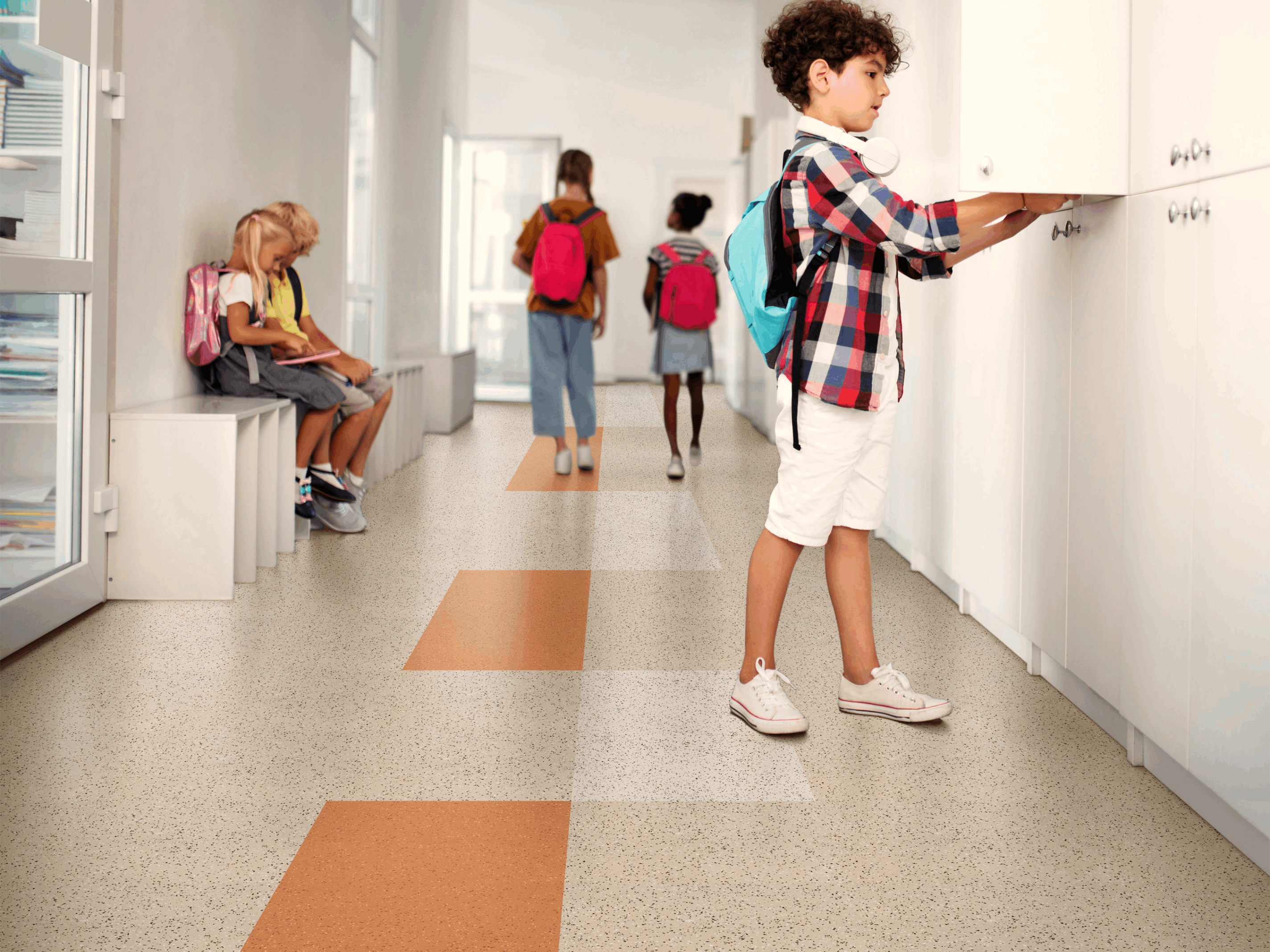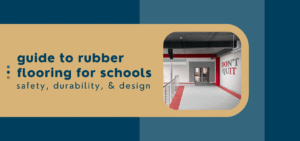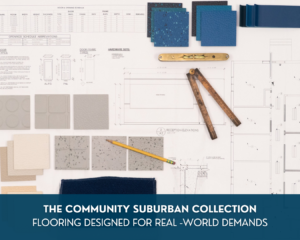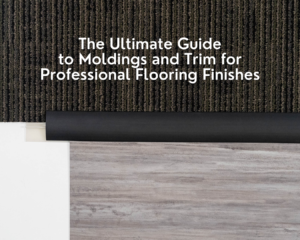Wayfinding—helping people navigate and understand their surroundings—has become essential in today’s complex buildings. This is particularly true for large spaces like hospitals, airports, schools, and offices. Rubber tile flooring is emerging as a key player in modern wayfinding strategies.
Why Wayfinding Matters
Effective wayfinding goes beyond simple signage. It encompasses everything that helps people orient themselves and move through a space. This includes:
Signage
Clear, concise signs guide people to their destinations.
Landmarks
Distinctive architectural features that act as reference points.
Maps
Visual representations of the environment for overview and planning.
Color Coding
Using different colors to designate zones, paths, or functions.
By incorporating these elements, wayfinding improves accessibility, safety, and user experience.
Rubber Tile: A Versatile Wayfinding Solution
Rubber tile flooring isn’t just durable and attractive; it’s also highly functional for wayfinding:
Accessibility
Rubber tile meets ADA standards for slip resistance and can be paired with tactile paving to aid visually impaired individuals.
Safety
The slip-resistant surface helps prevent falls, and contrasting colors can highlight hazards or changes in elevation.
Design Flexibility
Rubber tile comes in various colors, patterns, and textures, allowing creative and effective wayfinding designs.
Color Coding
Different colored tiles can create pathways, designate zones, or denote different functions within a building.
Real-World Applications
Hospitals
Colored pathways guide patients and visitors to specific departments.
Airports
Tactile paving helps visually impaired travelers navigate safely.
Schools
Color-coded zones help students identify different areas of the building.
Types of Rubber Tile Flooring
Homogeneous Rubber Tile
Made of a single layer, it offers consistent color and wear throughout.
Heterogeneous Rubber Tile
Multiple layers allow for greater design flexibility and often include a wear layer for enhanced durability.
Interlocking Rubber Tile
“Floating” installation is easy to install and replace, ideal for light traffic areas or as a temporary floor.
Rubber Crumb Floor Covering
Made from recycled materials, it is a sustainable option.
Benefits of Rubber Tile Flooring for Wayfinding
Durability
Rubber tile withstands heavy foot traffic and resists wear and tear.
Slip Resistance
Provides a safe surface, which is especially important for inclined floor surfaces or areas prone to liquid spills.
Ease of Maintenance
Simple to clean and maintain, keeping its appearance over time.
Noise Reduction
Helps create a quieter environment.
Design Versatility
Wide range of colors, patterns, and textures for custom wayfinding solutions.
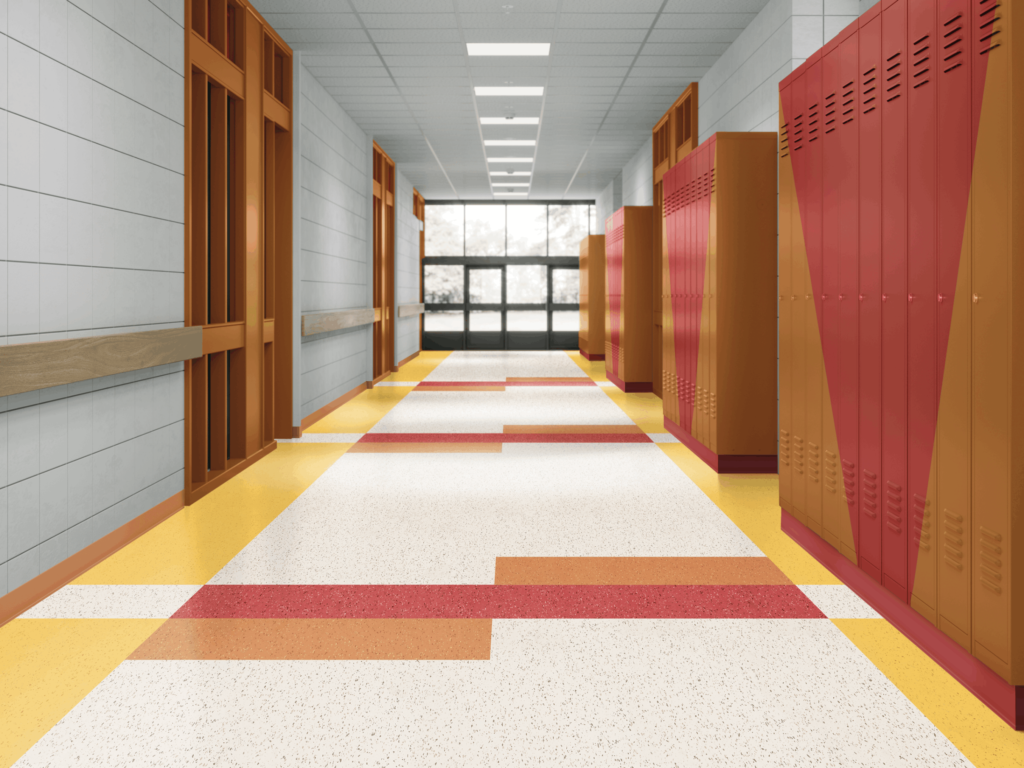
Community Suburban Speckled Tile
Choosing the Right Rubber Tile Flooring
Consider the following factors when selecting rubber tile for wayfinding:
Traffic Level
Choose a tile with the appropriate wear layer for the expected foot traffic.
Environment
To select the right tile type and properties, consider the space’s function (healthcare, education, etc.).
Design
Choose colors and patterns that complement the overall aesthetic and create a clear wayfinding path.
Accessibility
Ensure the tile meets ADA standards for slip resistance and consider incorporating tactile elements.
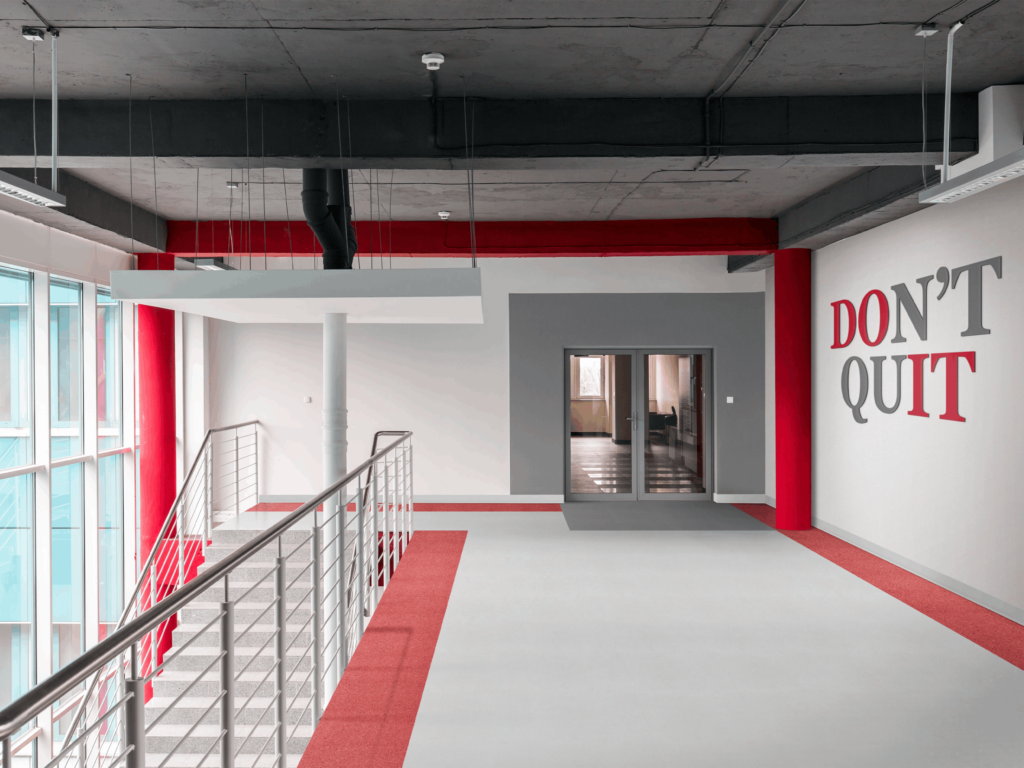
Community Suburban Solid Rubber Tile
Additional Wayfinding Solutions
In addition to the benefits mentioned above, rubber tile flooring can also be used to incorporate the following wayfinding solutions:
Tactile wayfinding solutions
Tactile wayfinding solutions are durable and flexible rubber indicators used to guide people around various environments, including the visually impaired. They are available in four colors: ivory, vogue black, smoke grey, and yellow.
Floor inlays for wayfinding
Floor inlays are a wayfinding system that uses symbols or signage embedded directly into the floor. They are made of durable rubber and can be customized to include any design, symbol, or message. Floor inlays are a safety feature that can help prevent slips and falls and provide clear and easy-to-understand directions for people of all languages.
Wayfinding floor signage
Wayfinding floor signage is a tactile surface indicator that uses a series of bars or bumps to create a detectable path on the ground. These paths are designed to help visually impaired people navigate their surroundings safely. Wayfinding floor signage can be made of different materials, including stainless steel, rubber, and porcelain.
ADA-compliant tactile way-finding surfaces
ADA-compliant tactile way-finding surfaces are slip-resistant tiles used to guide visually impaired pedestrians. They are made from durable, weather-resistant materials. They come in various colors and different dimensions, including 6″ x 24″, 6″ x 48″, 12″ x 12″, 12″ x 24″, 24″ x 24″, and 40 cm x 40 cm.
Community Suburban Rubber Tile
The Rubber Tile within The Suburban Collection provides enhanced safety, durability, and an easy-to-clean solution suitable for hard-wearing environments. Available surface textures include square, round, smooth, and sculptured. The comprehensive offering is designed to meet the demands of healthcare, education, or corporate spaces. Mix and match colors within the solid and speckled lines to create a custom look that is perfect for your project.
Creating a Welcoming and Inclusive Environment
Wayfinding is a critical aspect of modern design, impacting accessibility and user satisfaction. Rubber tile flooring offers a multi-faceted solution that combines durability, safety, design, and versatility. By integrating rubber tile into your wayfinding strategy, you can create a more navigable and inclusive space for everyone.

